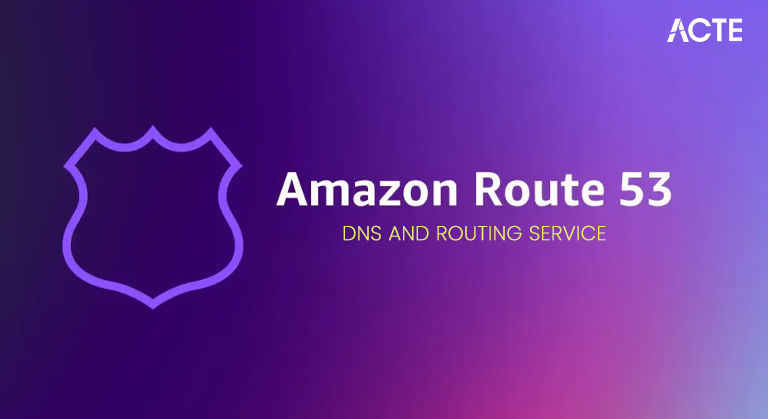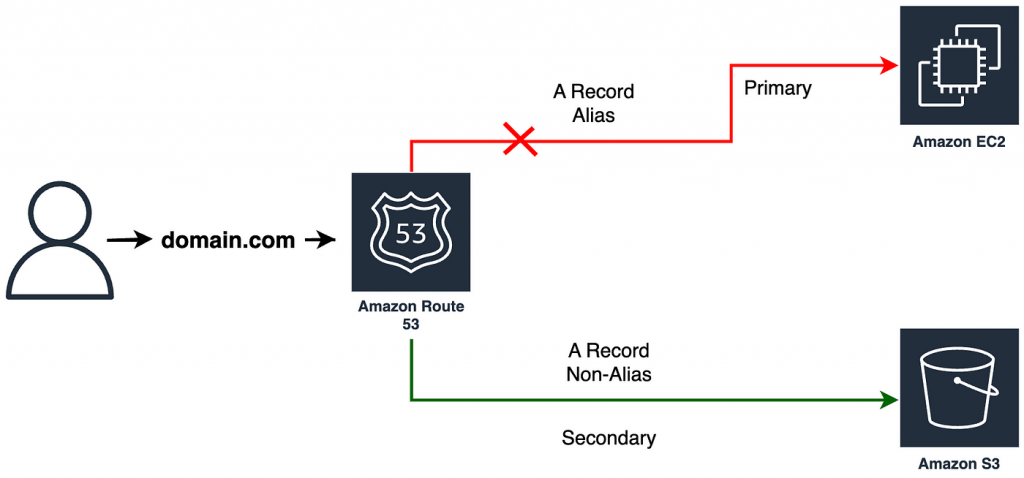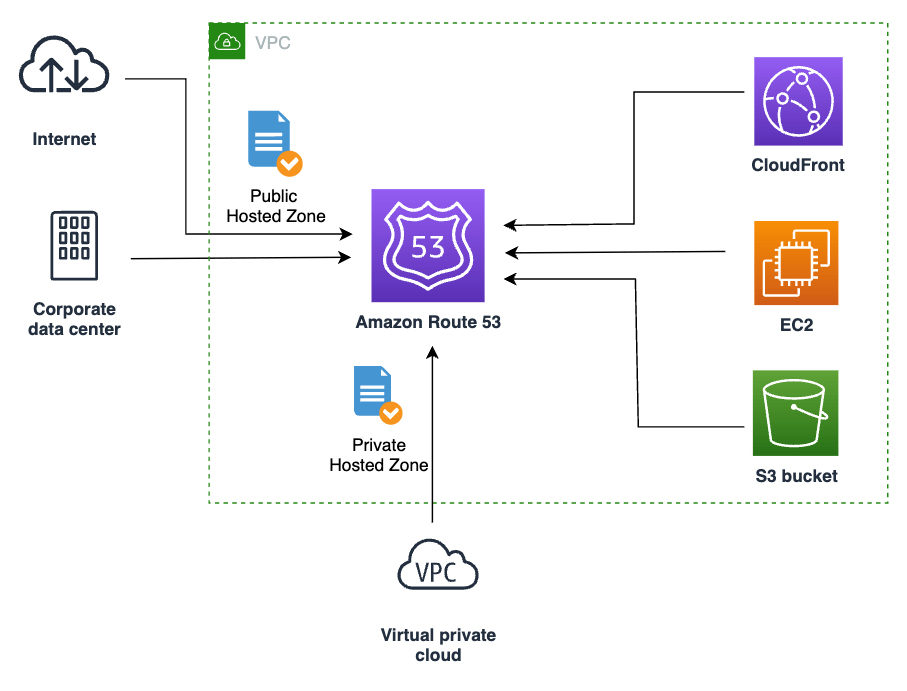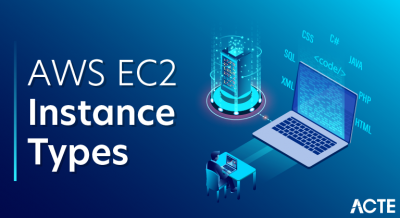
- Introduction to Amazon Route 53
- Key Features of Amazon Route 53
- How Amazon Route 53 Works
- Types of Route 53 Records
- Benefits of Using Amazon Route 53
- Use Cases of Amazon Route 53
- Pricing of Amazon Route 53
- Amazon Route 53 vs. Traditional DNS Services
- Setting Up Amazon Route 53
- Security Features of Amazon Route 53
- Best Practices for Using Amazon Route 53
- Conclusion
Introduction to Amazon Route 53
Amazon Route 53 is a highly available and scalable Domain Name System (DNS) web service offered by AWS. It helps manage and route end-user requests to various resources like Amazon EC2 instances, Elastic Load Balancers, and S3 buckets. Route 53 is designed to be cost-effective and reliable, making it suitable for multiple applications, from websites to web applications and cloud-based services. It also offers domain registration, health checks, and traffic management, ensuring that your resources are highly available and performing at their best.
Key Features of Amazon Route 53
Amazon Route 53 provides several features that make it a robust DNS service:
- DNS Routing: Route 53 translates domain names into IP addresses, allowing users to connect to websites and applications.
- Domain Registration: It enables users to register new domain names or transfer existing ones, simplifying domain management.
- Health Checks: Route 53 continuously monitors the health of your resources and automatically reroutes traffic to healthy resources in case of failure.
- Traffic Flow Management: To improve application performance and Guide to Cloud Security, you can configure routing policies such as weighted, geolocation, latency-based, and failover routing.
- Scalability: Built on AWS’s infrastructure, Route 53 can handle large amounts of DNS queries traffic and scale as your business grows.
- Integration with AWS: Route 53 integrates seamlessly with other AWS services like EC2, S3, CloudFront, and Elastic Load Balancing, simplifying management and setup.
Gain in-depth knowledge of AWS by joining this AWS Certification Training now.
How Amazon Route 53 Works
Amazon Route 53 manages DNS records for domains and routes traffic to the appropriate resources. The process begins when a user enters a domain name into their browser. The request is sent to a DNS infrastructure resolver, which DNS queries Route 53 for the corresponding IP address. Route 53 then resolves the domain name and directs the request to the appropriate AWS resource or external server. Route 53 also offers features like health checks and traffic routing policies. Health checks monitor your resources, and if any fail, Route 53 automatically reroutes traffic to healthy resources to maintain uptime. Traffic routing policies can be used to optimize performance by directing users to the server with the lowest latency or based on their geographic location.
Types of Route 53 Records
Amazon Route 53 supports different DNS records, each serving a specific purpose. Each record type has specific use cases and can be customized according to your needs. Here are some common kinds of Route 53 records:
- A Record (Address Record): Maps a domain name to an IPv4 address, allowing users to access a website.
- AAAA Record: Similar to the A record, but maps a domain name to an IP address.
- CNAME Record (Canonical Name Record): Aliases one domain name to another.
- MX Record (Mail Exchange Record): Directs email traffic to a mail server for a specific domain.
- TXT Record: Stores text-based information like domain verification and Amazon Web Services List (e.g., SPF records).
- NS Record (Name Server Record): Defines the authoritative name servers for a domain.
- SRV Record: Used to define the location of services like SIP or LDAP.
- High Availability: Route 53 is built to be highly reliable, with AWS’s global infrastructure ensuring minimal downtime.
- Global Scalability: As your business grows, Route 53 can easily scale to accommodate increasing DNS queries volumes without any additional effort.
- Cost-Effective: The AWS Solutions Architect Salary Guide model ensures that you only pay for the queries you use, making it a cost-effective option.
- Easy Integration with AWS: Being part of the AWS ecosystem, Route 53 integrates seamlessly with services like EC2, CloudFront, and S3.
- Advanced Traffic Management: Route 53 offers advanced routing policies to optimize performance and ensure high availability for your applications.
- Security: With built-in features like DNSSEC, health checks, and DDoS protection through AWS Shield, Route 53 ensures your DNS infrastructure is secure and resilient.
- Hosted Zones: You pay monthly for each hosted zone you manage.
- DNS Queries: Charges are based on your domain’s number of DNS queries. The cost varies depending on the volume of queries.
- Domain Registration: Registering a new domain through Route 53 will incur an annual registration fee, which varies based on the top-level domain (TLD) you choose (e.g., .com, .org).
- Health Checks: Health checks come with an additional cost, depending on the frequency of checks and the number of resources AWS Certified Developer Associate Exam .
- Access Control: Integration with AWS IAM allows you to define and enforce granular access controls for your DNS queries.
- DNSSEC: DNS Security Extensions (DNSSEC) help prevent DNS spoofing and cache poisoning attacks by ensuring that DNS responses are authenticated.
- DDoS Protection: Route 53 is protected by AWS Shield, which helps protect your DNS infrastructure from Distributed Denial of Service (DDoS) attacks.
- Traffic Encryption: Route 53 ensures that all traffic between clients and AWS infrastructure is encrypted, securing the Google Cloud SPL in transit.
- Domain Privacy: For domains registered with Route 53, you can enable domain privacy to prevent your personal information from being publicly visible in WHOIS records.
- Use Health Checks: Set up health checks to monitor the status of your resources and ensure that only healthy resources receive traffic.
- Enable DNSSEC: Protect your domains by enabling DNSSEC to prevent unauthorized tampering with your DNS records.
- Use Traffic Flow: Leverage Route 53’s advanced traffic flow features to route traffic intelligently based on geographic location, latency, or other factors.
- Monitor DNS Queries: Use Google Cloud vs AWS Comparison to monitor DNS queries and ensure optimal performance.
- Configure Failover Routing: Implement failover routing to automatically redirect traffic to backup resources in case of a failure.

Benefits of Using Amazon Route 53
There are numerous benefits to using Amazon Route 53 for managing your DNS:
Start your journey in AWS by enrolling in this AWS Certification Training .
Use Cases of Amazon Route 53
Amazon Route 53 can be used in a variety of scenarios, offering significant benefits across different industries and use cases. It is ideal for managing DNS queries for websites hosted on AWS, ensuring fast and reliable access to web resources. For global applications, Route 53 optimizes traffic routing to serve an international audience, minimizing latency and ensuring high performance. It also plays a crucial role in email management by handling MX records and directing email traffic to the correct mail server. In hybrid cloud environments, Route 53 can manage both on-premises and cloud-based resources, making it a versatile choice for hybrid AWS Training . Additionally, Route 53’s health checks and failover routing capabilities make it an excellent solution for disaster recovery, as it can automatically redirect traffic to healthy resources when needed. Moreover, Route 53 supports advanced routing policies, such as weighted, latency-based, and geolocation-based routing, which allow businesses to fine-tune how traffic is distributed across multiple resources. This flexibility enhances the performance and reliability of applications with diverse traffic needs. The integration with AWS services like CloudFront, ELB, and S3 further enhances Route 53’s capabilities, enabling seamless management of web applications and content delivery. For companies managing large-scale, distributed systems, Route 53 offers easy scalability to handle growing traffic loads. With Route 53, businesses also benefit from robust security features, such as DNSSEC (Domain Name System Security Extensions), to prevent DNS spoofing and ensure the integrity of their DNS data. The service also provides monitoring and reporting features, enabling organizations to keep track of DNS query performance and diagnose issues swiftly.
Pricing of Amazon Route 53
Amazon Route 53 uses a pay-as-you-go pricing model, which means you only pay for what you use. Route 53’s pricing model is flexible. You pay only for what you use, and it offers competitive rates for DNS services. The key pricing factors include:
Amazon Route 53 vs. Traditional DNS Services
Amazon Route 53 provides several advantages over traditional DNS services, particularly in terms of scalability, integration, and flexibility:
| Feature | Amazon Route 53 | Traditional DNS Services |
|---|---|---|
| Scalability | Automatically scales with traffic | May require additional infrastructure for scaling |
| Integration with AWS | Seamless integration with AWS services | Requires manual setup for integration |
| Traffic Routing | Advanced routing policies (e.g., weighted, latency-based) | Requires manual intervention to scale |
| Access Flexibility | Access from any device (Windows, Mac, iOS, Android, Web) | Basic routing capabilities |
| Pricing | Pay-as-you-go pricing model | May require upfront fees or fixed pricing |
| Global Availability | Global DNS infrastructure | May have limited availability based on location |
| Security | Built-in DDoS protection and DNSSEC | Security features may require third-party tools |
Route 53’s deep integration with AWS and its advanced routing and security features make IP address a superior choice compared to many traditional DNS services.
Aspiring to lead in Cloud Computing? Enroll in ACTE’s Cloud Computing Master Program Training Course and start your path to success!
Setting Up Amazon Route 53
Setting up Amazon Route 53 is straightforward and can be done via the AWS Management Console. The process begins by creating a hosted zone for your domain, which acts as a container for DNS records. Next, AWS Sysops Certification add the necessary DNS records, such as A, CNAME, and MX, to ensure that your domain points to the correct resources. Afterward, you can configure health checks to monitor the status of your resources and automatically reroute traffic if they become unavailable. Additionally, routing policies can be set based on your application’s needs, such as latency-based routing or geolocation-based routing. Finally, once the setup is complete, you can use tools like dig to test and verify that your DNS records are functioning as expected.

Security Features of Amazon Route 53
Amazon Route 53 offers several security features to protect your DNS infrastructure:
Best Practices for Using Amazon Route 53
To maximize the performance and reliability of your DNS setup, here are some best practices for using Amazon Route 53:
Preparing for AWS interviews? Visit our blog for the best AWS Interview Questions and Answers .
Conclusion
Amazon Route 53 is a powerful and cost-effective DNS service that provides a range of features for domain registration, routing traffic, and ensuring high availability for your applications. With its deep integration into the AWS ecosystem, advanced traffic management capabilities, and AWS Training features, Route 53 offers a reliable solution for managing DNS records and optimizing web application performance. Whether hosting a simple website or running a complex global application, Route 53 provides the tools and flexibility you need to ensure a seamless user experience.



